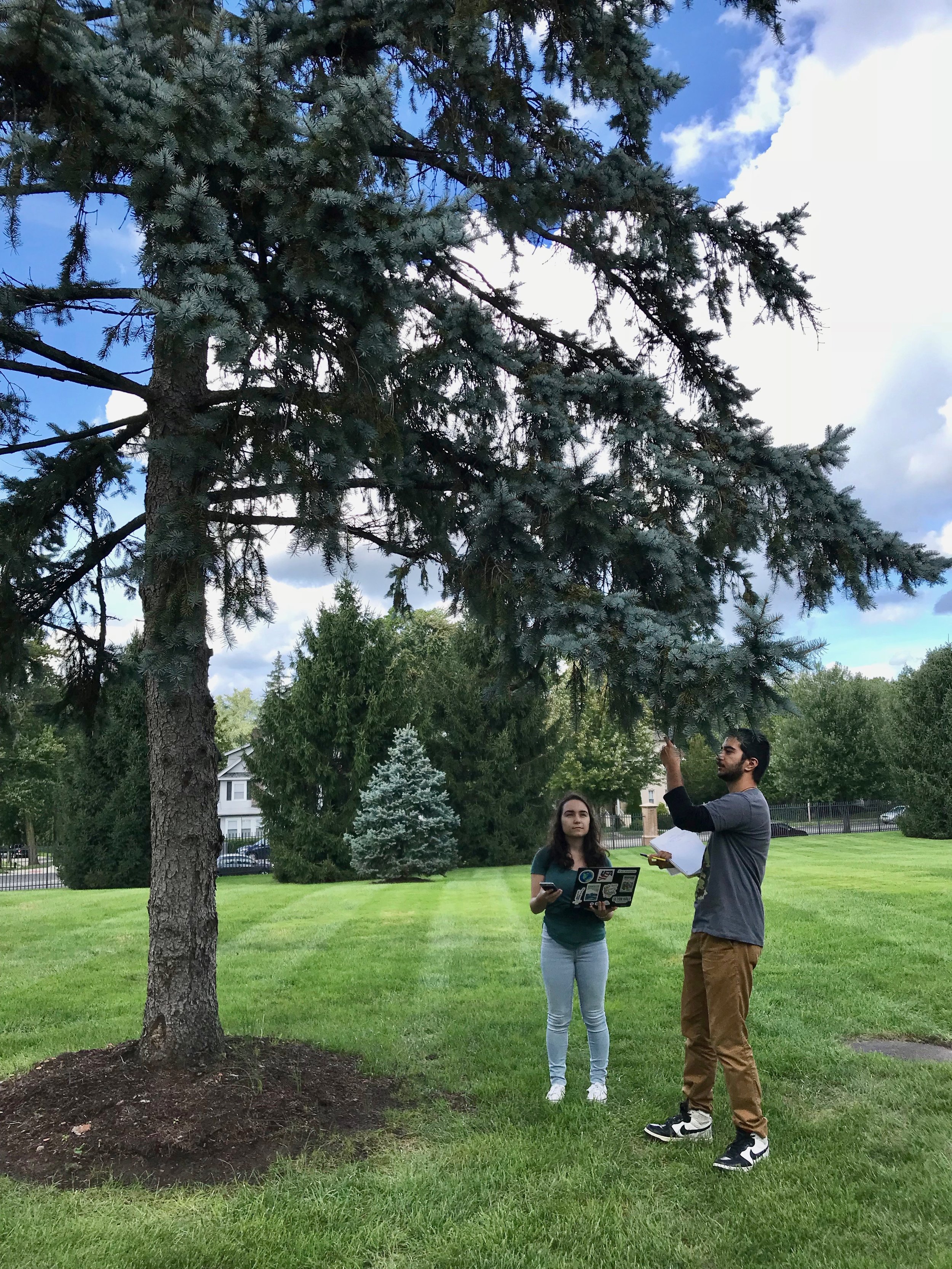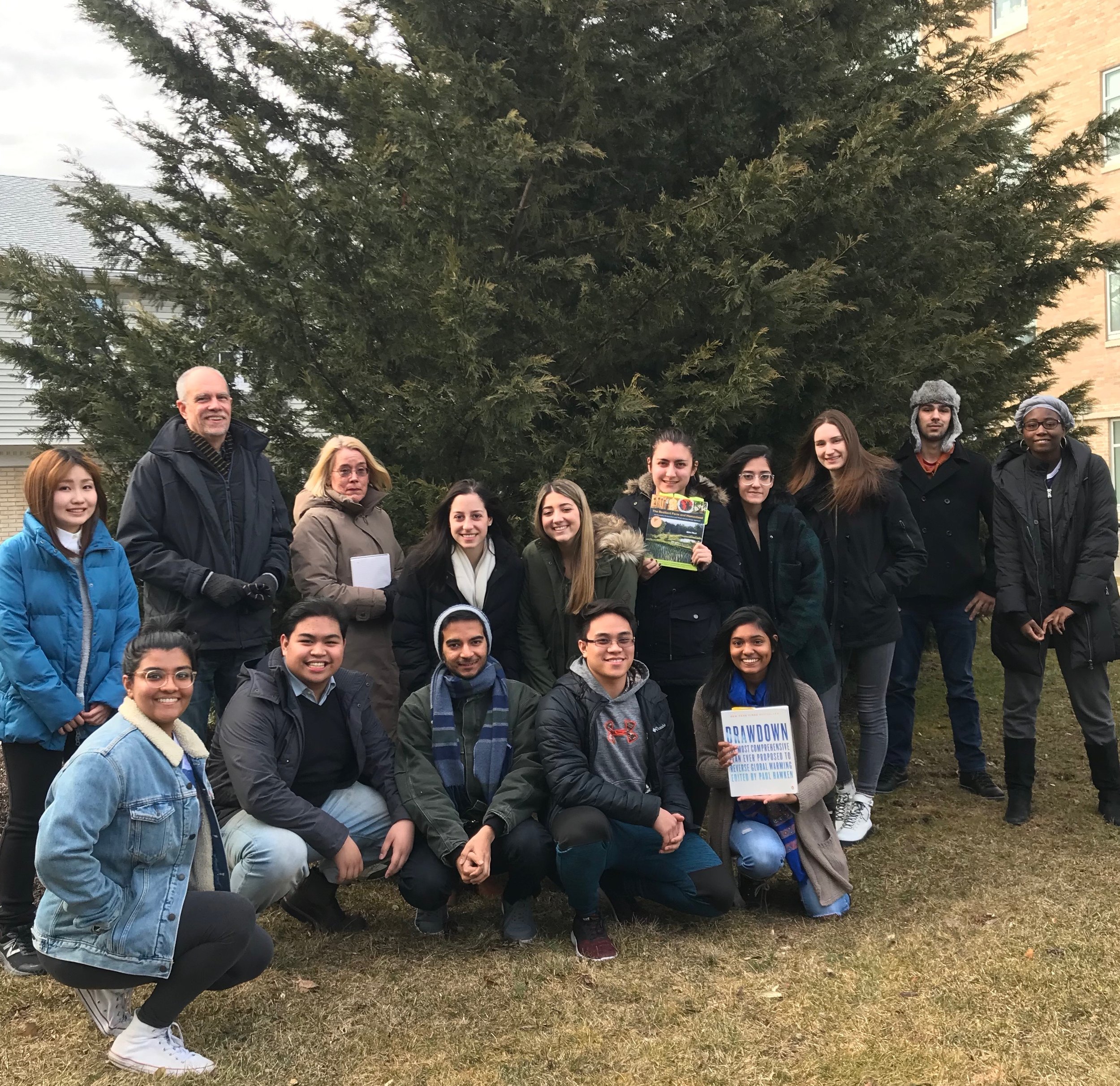Seton Hall Students Plot Public Trees
Seton Hall students Saveria Antonacci and Maharsh Barot identifying trees on campus.
When a town has more than 10,000 trees, it takes some teamwork to identify them all. That’s why Seton Hall University is collaborating with the South Orange Environmental Commission and Green Team to complete a tree inventory of all the public street trees in the Village of South Orange (10,000-12,000 trees). The project started in the Fall of 2018 with students counting and identifying 950 trees on campus using smartphone-GIS mapping software (Tree Plotter) to store the data in a cloud-based tree inventory system.
In the second phase, students are counting and measuring the public trees that are in the neighborhoods close to campus. Each semester new Environmental Studies students will learn about tree identification and help the Village of South Orange with the project, which will take several semesters to complete. When working in local neighborhoods, students will be wearing green caps and a white button with blue letters that says: Seton Hall University Tree Inventory Team.
Census Bureau maps and methodology are being used to inventory each block and enter the data into Tree Plotter. Students are learning about trees and GIS technology, as well as acquiring arborist skills, all of which can be added to their resumes for internships and employment after graduation. The Tree Plotter software enables key information to be stored, analyzed and shared, regarding the location, description, photos and maintenance of trees. The insight gained includes ecosystem benefits of the trees: improve air quality, reduce stormwater runoff, reduce energy consumption to heat and cool buildings, reduce atmospheric carbon dioxide, as well as increased property values.
The Seton Hall Tree Plotters
Helan Thomas, a Junior majoring in Biology and Environmental Studies, offered the advice to "count all the trees and measure DBH (diameter) first, during the winter, and then the work in the Spring can be the identification, when the leaves grow back." Bill Haskins, South Orange Environmental Commission Chairman, agreed with this two-step approach and is excited to incorporate it during data collection for the trees along streets and in public parks. He is also interested in doing an overall tree canopy analysis, to better communicate the benefits of the trees to residents and for grant writing (increased property values as well as ecological benefits). Walter Clarke, South Orange Environmental Commission, proposed that the thousands of public/street trees be categorized as infrastructure and that the public works budget include an allocation for maintaining and pruning the trees. "We have many large, old ash trees in town and they need the emerald ash borer treatment, to prevent the beetles from killing the trees. This can cost hundreds of dollars per tree."
For more information about this project, please contact the South Orange Environmental Commission or Wanda Knapik, faculty contact at Seton Hall University: wanda.knapik@shu.edu
Related articles:
https://www.shu.edu/arts-sciences/news/students-identifying-and-inventorying-all-campus-trees.cfm
https://www.shu.edu/arts-sciences/news/students-participate-in-south-orange-tree-project.cfm


